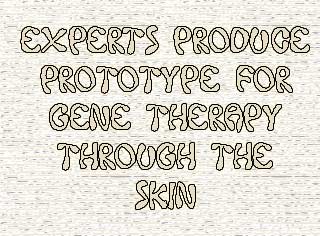
Evidently, Vaseline is believed to be a molecule found in apples. On the other hand, these experts were stated to have developed alginate capsules with living cells which evidently contain a specially designed network of genes. Apparently this genetic network is believed to have produced the protein SEAP.
Professor Marc Gitzinger seems to have developed a prototype for gene therapy through the skin. A key role in this study was believed to have been played by phloretin which seems to have been found in daily foodstuffs like apples. It may perhaps play an important role in cosmetics as an anti-wrinkle agent. Evidently, phloretin appears to be an antioxidant which might make cell walls more permeable and may undergo rapid degradation in the body.
Apparently, it is believed to have a very simple method of direction. First the experts need to insert a capsule with a specific gene under the skin, on top of which skin cream may be applied. This application of cream is believed to have the ability to arouse the gene into action, which may in turn express an active principle. This principle may possibly succeed in escaping from the capsule in a fixed dose.
The capsules were noted to have been implanted under the skin of test mice which were then believed to have been coated with an ointment. According to a particular principle this skin cream may probably consist of commercial milk fat mixed with phloretin. Supposedly, phloretin was believed to have penetrated into the skin while the cells and the capsules seemed to be stored within. As anticipated by the experts, the antioxidants from the apples were believed to have the ability to reduce the production of protein. Evidently it was noted that a large dose of phloretin in the cream seemed to have the ability to completely curb the production of SEAP.
“When developing the principle we had no particular clinical picture in mind,” elucidated Gitzinger. “We were concentrating on the route of administration through the skin.”
Therapeutic agents apparently seem to have many advantages but it was believed to have one disadvantage with regards to the liver. The liver being a detoxifying organ may destroy most of the active agents before it reaches the target site. Therefore the gene therapy is believed to prove beneficial as it may not cause any strain on the liver because of its capability to only act on the targeted area.
Implants which may be stored in the body for a relatively long time and may be easily removed after the end of therapy seem to have been well accepted by the public.
These experts were also noted to have used certain components to make biological switches which may in turn allow such systems to be switched on or off. This new genetic network appears to be a typical example of development in synthetic biology.
This study has been published online on the Proceedings of the National Academy of Science.
